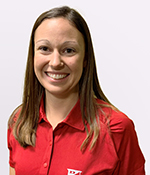Pre-Planting Considerations and Decisions
BY Dairyland Seed Agronomy Team
SPRING PLANTING AND TILLAGE DECISIONS
In looking at decisions that farmers make, almost all of them are important. It is my opinion that when it comes to crop production, two of the most important decisions that farmers make are:
- The day the ground is tilled; and
- The day the ground is planted.
Deciding when to work the soil can be a game changer for the crop. If you hurry the decision along and work the soil when it is wet, you end up creating a layer of compaction at the depth of the tillage implement. This layer of compaction, if thick enough, may not allow the soil below to dry out and will remain wet. The layer of soil above the compaction zone may dry out and not allow seeds to germinate or roots to go below the compaction zone. If roots do make it through the compaction zone, they will be low in number and migrate to areas where they can go through, which is not a good plan for accessing water and nutrients and or plant standability.
If the weather remains wet after working the soil, the layer of compaction that was created will stop or slow down water moving through the soil profile. If the soil above that compaction zone becomes saturated, this can lead to increased ponding and/or erosion. If the weather starts to dry out, you may have a layer of dry soil above the compaction zone and wet soil below the compaction zone, which again limits the ability of the plant to bring in water or nutrients in either the wet zone or dry zone.
If you work the ground when it is too dry, you are increasing the rate that moisture is leaving the seedbed. The consequences of low moisture in the seedbed include inhibiting and/or reducing germination and plant growth. Also, by working the soil you are breaking down residue and moving it in the soil profile, which can increase the potential for wind erosion.
The day you have the greatest yield potential is the day you decide to plant; any inputs or factors after that will maintain that yield or reduce it. The rule of thumb I was told to follow to make a good seedbed was to work the ground one day and plant the next day, allowing 18-24 hours for the soil to dry out. If the soil is still too wet to plant, let it dry out and try and plant the next day. If the soil is dry to very dry, work the ground and plant it in the same day; this allows you to take advantage of moisture in the seeding zone. By running a roller/packer or a drag back over your field after you plant will help seal up the soil and help prevent further moisture loss. The down side of this practice is that in soils that are worked you also increase the potential for more erosion.
In some instances, we can’t find that “just right Goldilocks” moment to put the crop in. As we have experienced in the last few years, waiting to let a field dry out may mean not getting it planted, and we may be better off just getting the crop in. Every situation is different, and there is really no one best way to always have that “just right Goldilocks” moment of soil conditions. In some instances, just closing your eyes and not paying attention to soil conditions may be the only option to getting a crop in.
KEY REMINDERS FOR PLANTING CORN
Planting Depth: Plant 1.5 to 2 inches deep. Planting less than 1.5 inches deep, depending on weather and soil conditions, increases the probability of the corn seed not germinating, due to cooler soil temperatures or fluctuations in moisture in the seed zone.
Corn plants take in 30 percent of their weight in water during the germination process. By not having the proper planting depth you risk seeds not fully germinating or not having enough moisture to continue to grow. Another forgotten reason to plant 1.5 inches or deeper, is that many herbicide labels state that to safely use that product, corn needs to be planted 1.5 inches or deeper, or injury may occur.
Soil Temperatures: Plant when soil temperatures are 50°F or more, or when air and soil temperatures will be increasing to that level or more. Corn can germinate with temperatures less than 50°F; however, germination is more consistent at 50°F or more. If soil temperatures are in the low 40°F or less, you can increase the incidence of Imbibitional Chilling Injury or Cold Shock Syndrome, which can kill plants and subsequently reduce plant populations/harvestable ears. Cool wet soils increase the incidence of crown rot as well as seedling diseases.
Starter: I recommend utilizing a quality liquid starter and zinc to help the plant have an energy source (Phosphorus in the starter) as well as the ability to help move nutrients and protect the germination process (Zinc). It has been my experience that quality starter and zinc, helps the corn “Pop Up” out of the soil, and have better early season growth. It is also my observation that this early season growth translates to earlier tassel and pollination which, in most cases, leads to increased yields, better test weight, and dry down.
Plant Populations: My typical recommendation is to plant 1000 to 500 more seeds than what is desired for a harvestable stand. Part of this is that not every seed will germinate, as well as:
- Less than ideal planting seedbed
- Hail/Greensnap
- Wildlife i.e., racoons, skunks, geese, turkeys, deer, grazing cattle and, in some southern states, wild hogs may eat seeds or seedlings
- Seed and seedling diseases
- Soil types
The ability to variable rate plant has changed how we handle some of these issues, and is a tool that provides a better Return on Investment, than increasing the seeding rate across the entire field.
If you have questions or concerns regarding this please contact your Dairyland Seed Representative or Agronomist.
KEY REMINDERS FOR SPRING ALFALFA STAND ESTABLISHMENT
Field Selection: Since alfalfa is planted with the intention of being in production for three or four years, it is important to start with good stand establishment. Alfalfa prefers well-drained soils with adequate fertility levels. Poorly-drained fields can result in drowned out areas and are associated with higher disease pressure. Avoid fields that had at least a two-year-old stand of alfalfa as the previous crop due to autotoxicity. Another factor to consider is herbicide carryover. Check your herbicide history for the past two years to identify any residual chemistry that could inhibit alfalfa establishment.
Soil pH: Maintaining a soil pH of 6.8-7.0 will increase nutrient availability and alfalfa performance. Plan to make any necessary lime or soil amendment applications about a year in advance to allow for adequate time to adjust pH.
Soil Fertility: Soil fertility levels are best assessed with soil test programs. The key nutrients to pay attention to for alfalfa are Phosphorous (P) and Potassium (K). Keep in mind that every dry ton of alfalfa removes about 14 lbs of P2O5 and about 58 lbs K2O from the soil. Rate recommendations and levels vary by state and region but follow the same trend.
- Phosphorous (P) 20-30 ppm is the minimum level
- Potassium (K) 170 ppm is the minimum level
- Sulfur (S) and Boron (B) will likely need to be applied every year and should be correlated with tissue sample/soil test and yield goals for proper rates
- Some soils may require about 10-20 units of Nitrogen (N) in the seeding year to supply the plant with N prior to nodulation
Seedbed Preparation: Good seed-to-soil contact is essential for alfalfa stand establishment. In order to germinate the alfalfa seed needs adequate water and soil temperatures at or above 40 degrees Fahrenheit. A good seedbed will be firm and free from clods. As a rule of thumb your footprint should not sink more than ¼ of an inch when walking through the field. A packer or roller does a great job firming up the conventionally tilled soil and is usually used before and after planting. In no-till situations residue can be burned down using products like glyphosate (Roundup) or paraquat (Gramoxone).
Seeding Depth and Rate: Alfalfa needs to be planted ¼ to ½ of an inch deep with 3/8 of an inch being the sweet spot. Seeding rates should be 15-22 lbs for solid alfalfa and 12-18 lbs with a companion crop.
Controlling Weeds: Managing weeds in alfalfa is very important, especially during establishment. If you lose control of weeds, they can choke out young seedlings resulting in reduced yield and quality. Common herbicides used in alfalfa seedlings recommend weeds to be less than 3 inches tall for best control. Some of these common herbicides like 2,4-DB (Butyrac), imazethapyr (Pursuit) and imazamox (Raptor) require the alfalfa seedling to be at or beyond the 2 trifoliate stage. Other herbicides like bromoxynil (Buctril) require the seedlings to be at the 4 trifoliate stage. Selective herbicides like sethoxydim (Poast) and clethodim (Select Max) can be used to help control grasses in the alfalfa seeding. If you planted a companion crop with your alfalfa use caution when selecting herbicides. Always read the label for the proper rate, timing, harvest restrictions and other information.
WEEKLY AGRONOMY NEWSLETTERS – DON’T MISS OUT!
The Agronomy Team’s weekly agronomic newsletters will continue through the end of December. The weekly agronomy newsletter is sent by email each week and can also be found on our website under the Inside Pride tab.
The newsletters contain timely agronomic information including weather-related concerns, planting/harvesting guidance, identifying pests, weed control and more.
Want to be included on the mailing list? Please contact Stacy at the West Bend office at 800-236-0163 or send an email to dairylandseed@dairylandseed.com and ask to be added to our email listing.
 |
 |
 |
 |
 |
| Brian Weller Western Region 507.456.3034 |
Dan Ritter Central Region 219.863.0583 |
Branden Furseth Northern Region 608.513.4265 |
Rod King Eastern Region 574.596.6721 |
Amanda Goffnett Eastern Region 989.400.3793 |
